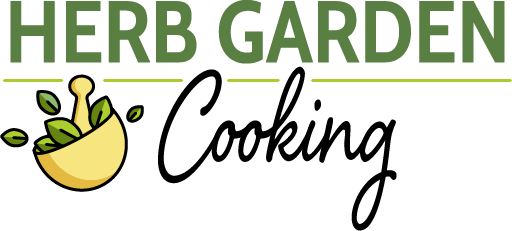This post may contain affiliate links which means I may receive a commission for purchases made through links. I only recommend products that I have personally used. As an Amazon Associate I earn from qualifying purchases. Learn more on my Private Policy page.

Sage plants encompass a wide range of species, each with distinct flavors, aromas, and appearances. These variations have contributed to the cultural significance of sage across different cuisines worldwide. Understanding the best types of sage for cooking will enhance your culinary explorations.
What are the best types of culinary sage to grow? Common sage and Greek sage are the most commonly grown types of sage for cooking. Varieties such as purple sage, tricolor sage, Berggarten sage, and golden sage can also be grown to provide a colorful garden display and diverse flavors for cooking.
Let’s explore the 6 best types of sage you can grow in your garden for culinary purposes, plus one fruity sage variety for teas & cocktails.
Table of Contents
1. Common Sage
Common sage (Salvia officinalis), also known as garden sage, is a versatile herb with gray-green leaves and a strong aroma that makes it easily recognizable in gardens and kitchens.
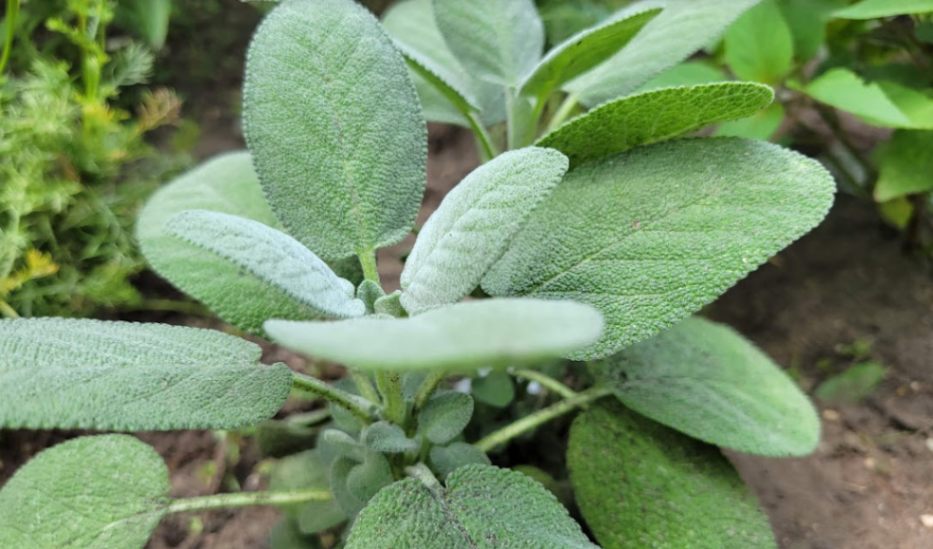
Growing Common Sage
Common sage typically grows up to 30” (75 cm) in height and thrives in full sun. Common sage is the most cold tolerant of sage varieties and is hardy in zones 4-8. This makes it suitable for growing as a perennial, even in cold climates such as where I live in Minnesota.
Like all types of sage, common sage thrives best in full sun and in sandy to loamy, well-drained soil. It prefer drier growing conditions and quite drought-tolerant. Common sage features beautiful violet to blue flowers that bloom from late spring to early summer under certain conditions.
Common Sage Flavor and Culinary Uses
Common sage leaves have a slightly bitter taste with hints of eucalyptus and citrus undertones. When used sparingly, it adds depth and complexity to various dishes. This herb pairs exceptionally well with poultry, pork, sausages, stuffing, soups, stews, and roasted vegetables. Common sage can be infused into oils or vinegar for added flavor dimensions.
Purchase sage plants from Amazon or sage seeds from SeedsNow
2. Greek Sage
Greek Sage (Salvia fruticosa) adds its unique flavor to various dishes in Greek and Middle Eastern cuisines.

Greek Sage Cultivation
Greek sage is one of the least cold-tolerant varieties of sage and can only be grown as a perennial in the relatively mild winters of USDA hardiness zones 8 to 10. Growing up to a height of 12-24” (30-60 cm), Greek sage requires full sun to thrive and prefers minimal moisture once established.
Greek sage blooms with blue-violet flowers from late spring to early summer, when conditions are right, which can help to attract pollinators like bees and butterflies to your garden.
Greek Sage Flavor Profile and Culinary Uses
Greek Sage offers a distinct flavor profile that sets it apart from other types of sage. Its leaves have a slightly peppery and earthy taste with hints of pine and citrus undertones. This makes it an excellent addition to many dishes such as soups, stews, roasted meats, marinades, and even bread stuffing for Thanksgiving.
Greek sage is commonly used in popular recipes such as:
- Lemon-Garlic Roasted Chicken: Rub a mixture of minced garlic, lemon zest, olive oil, salt, pepper, and chopped Greek sage over chicken pieces before roasting them in the oven.
- Spanakopita: Layer phyllo pastry sheets filled with sautéed spinach mixed with feta cheese and finely chopped Greek sage for an exquisite savory pie.
- Tzatziki Sauce: Combine grated cucumber with strained yogurt, minced garlic cloves, lemon juice or vinegar, chopped fresh dill, and a sprinkle of Greek sage for a refreshing dip or condiment.
3. Purple Sage
Purple sage (Salvia officinalis ‘Purpurascens’) is a stunning variety of sage that stands out with its vibrant purple foliage. This unique color adds an attractive pop to gardens and landscapes, making it popular among gardeners.
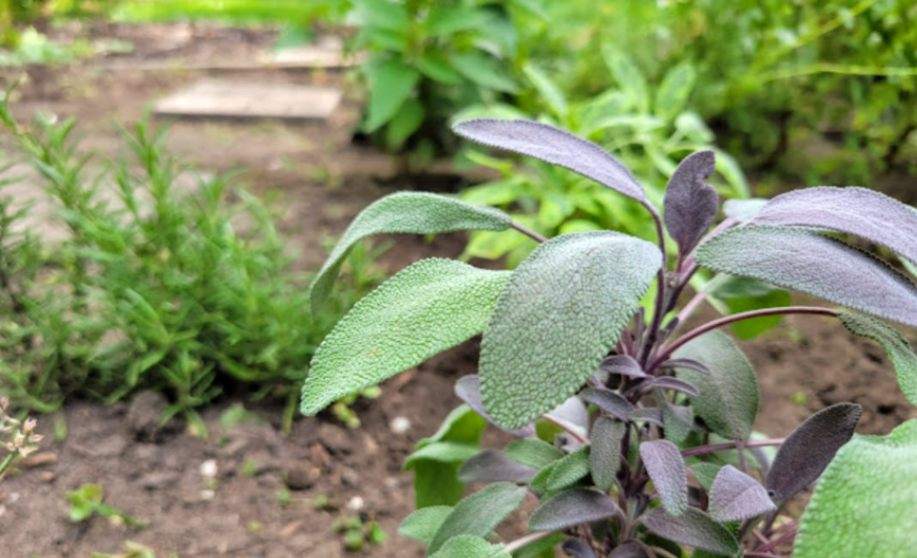
Growing to a height of 10-20” (25-50 cm), purple sage requires full sun exposure to thrive. Purple sage is hardy in zones 5-9, which means it can withstand a range of climates. Like other sage varieties, purple sage prefers loamy, well-drained soil and is very drought-tolerant.
One of the highlights of this variety is its blooming season, which occurs from late spring to early summer. During this time, purple sage showcases beautiful purple flowers that enhance the overall visual appeal of any garden or landscape.
Despite its striking appearance, purple sage still retains the traditional flavor commonly associated with common sage. This makes it not only visually appealing but also useful in culinary applications.
4. Tricolor Sage
Tricolor sage (Salvia officinalis ‘Tricolor’) is a variety of sage that showcases leaves with a striking combination of green, white, and purple hues. This unique coloration makes it an eye-catching addition to gardens or containers, adding a vibrant touch to any landscape.
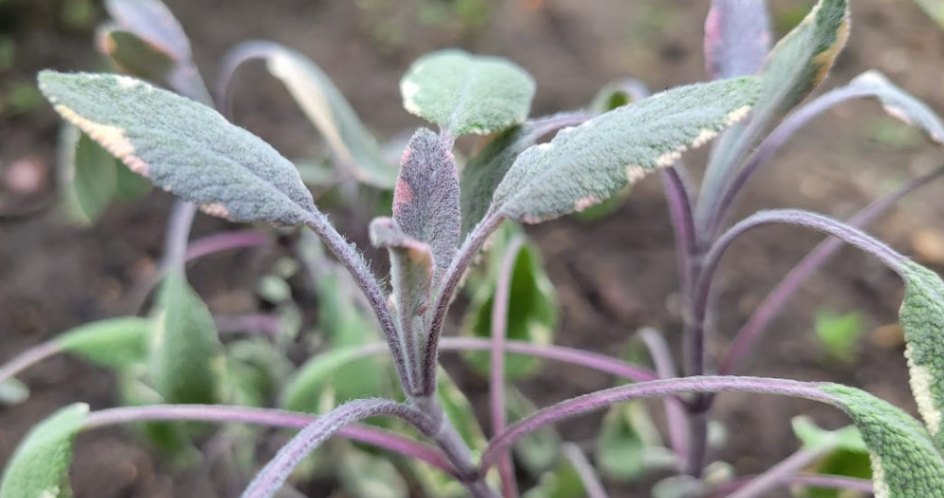
Growing up to 24” (60 cm) in height, tricolor sage thrives in full sun to part shade conditions. It is hardy in USDA zones 5-9 and thrives in full-sun environments. Tricolor sage prefers sandy to loamy soils and grows well alongside other drought tolerant herbs such as rosemary and thyme. Late spring to early summer brings forth delicate light blue to lavender flowers under the right conditions.
Tricolor sage tastes similar to common sage but has a milder flavor profile. Tricolor sage can be used in various culinary applications, just like other types of sage. Whether you are infusing oils, seasoning meats, or adding depth to your favorite dishes, tricolor sage is an excellent sage variety to utilize.
Purchase Tricolor Sage plants from Amazon
5. Berggarten Sage
Berggarten sage (Salvia officinalis ‘Berggarten’) boasts broad leaves that are larger than those found in common sage varieties. The visual appeal of Berggarten sage lies in its rounded shape and soft texture.
Growing between 12 to 24” (30 to 60 cm) tall, Berggarten sage thrives best when exposed to full sun or part shade and is hardy in zones 5 to 9. During late spring to early summer, this beautiful herb blooms with stunning violet to blue flowers, adding vibrant colors to any garden bed. Like other sage varieties, Berggarten sage benefits from occasional pruning to maintain its shape and encourage bushier growth, and it prefers loamy soil.
A distinguishing factor of Berggarten sage is its milder and slightly sweeter flavor compared to common sage, making it a favorite of chefs and home cooks alike. It can be used for various culinary purposes, such as flavoring meats, soups, sauces, and stuffing recipes.
Purchase Berggarten Sage plants from Amazon
6. Golden Sage
Golden sage (Salvia officinalis ‘Aurea’) is a captivating herb with bright yellow-green foliage that adds a vibrant touch to any garden.
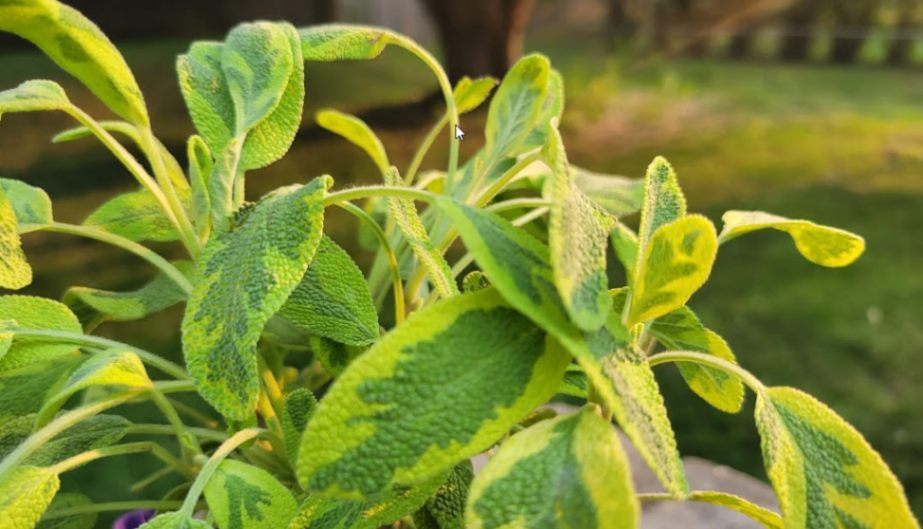
Golden sage grows to a height of 16-20 inches (40-50 cm) and thrives in full sun to part shade conditions. It is considered a hardy plant, suitable for zones 5-9. It has a late spring to early summer blooming period, when it produces delicate violet to purple flowers.
Golden sage thrives under direct sunlight but can tolerate partial shade. It prefers well-drained soil, and is a remarkably drought tolerant herb.
Golden sage offers a milder taste compared to common sage (Salvia officinalis). However, it can be used in similar ways when cooking. The leaves possess a silvery hue that complements their golden undertones, making them visually appealing and versatile for various culinary creations.
Pineapple Sage
Pineapple sage (Salvia elegans) is a perennial shrub known for its distinctive pineapple fragrance when its leaves are crushed or bruised.
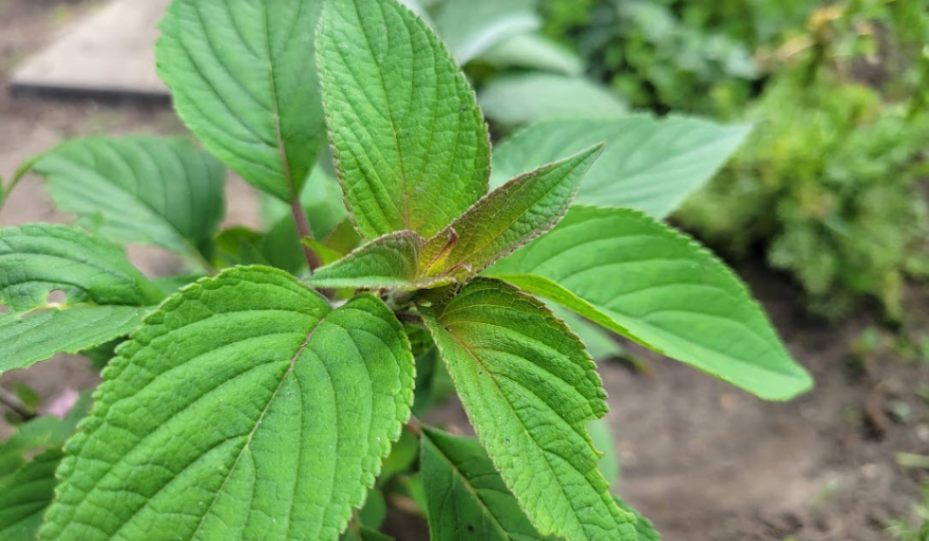
One of the great things about pineapple sage is its versatility. It can be grown as an annual in zones 8-11, where it thrives in full sun and can reach heights of up to 5 feet. Its vibrant red flower spikes, which bloom from late summer to early fall, add a pop of color to any landscape.
The tubular flowers of pineapple sage not only attract pollinators like bees and butterflies but also make for an eye-catching addition to floral arrangements.
While pineapple sage isn’t used in culinary applications similar to common sage, its pineapple-scented leaves can be brewed into teas or muddled into cocktails for a refreshing twist.
Purchase Pineapple Sage plants from Amazon
Conclusion on the Best Types of Sage
In conclusion, there are many different types of sage, each with its unique characteristics and culinary potential. Common sage and Greek sage are the most frequently used varieties, offering strong, distinct flavors that enhance many dishes. Purple sage, Tricolor sage, Berggarten sage, and Golden sage add color and diversity to your garden while also lending their unique flavors to your culinary creations. Pineapple sage may not be as commonly used in cooking, but it stands out for its unique pineapple fragrance and its use in teas and cocktails.
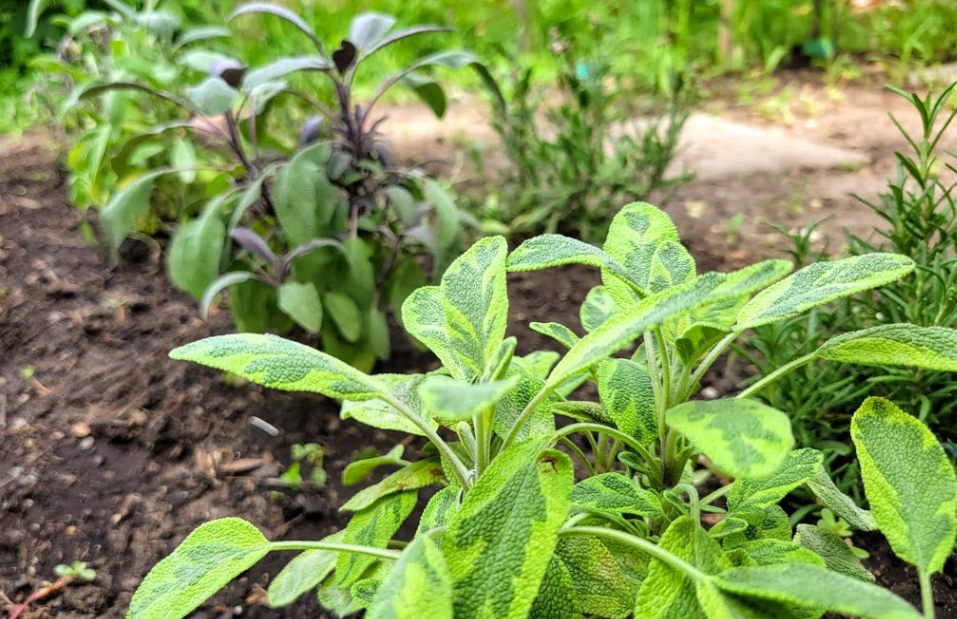
By understanding the various different types of culinary sage and their unique cultivation requirements and flavor profiles, gardeners and home cooks can better choose which varieties to grow and use in their own kitchens. The right choice of sage can elevate your dishes that blend aroma, flavor, and visual appeal. Whether used sparingly or as a major ingredient, sage is truly a must-have herb for every garden and kitchen.
Frequently Asked Questions (FAQs)
Can I use any sage for cooking?
While most types of sage share similar characteristics, their flavors can vary slightly. It’s best to use the type of sage a recipe asks for, but if you don’t have it, you can use a different kind. Common, Greek, Berggarten, purple, tricolor, and golden sage are all culinary sage varieties that can be used in cooking.
What is the best sage to grow?
Common sage is the most hardy sage variety to grow as a perennial and is hardy in zones 4-8. Other varieties of culinary sage, such as Burggarten, purple, tricolor, and golden sage, will grow in zones 5-9. Greek sage is not nearly as cold tolerant as common sage (Salvia officinalis), but can be grown in zones 8-10.
Is Greek sage the same as sage?
Common or garden sage (Salvia officinalis) and Greek sage (Salvia fruticosa) are different varieties of sage. Common sage has a stronger taste. It is hardier than Greek sage and can grow in hardiness zones 4-8. Greek sage has a milder taste and is suited for cultivation in warmer climates. It is hardy in zones 8-10.
When is the best time to harvest different types of sage?
Harvest sage leaves from culinary varieties on mature plants before the plant flowers for optimal flavor. Most types of sage are at their peak flavor intensity just before the plant begins to flower.
Last Updated on 28 April 2024 by Bob Lee
